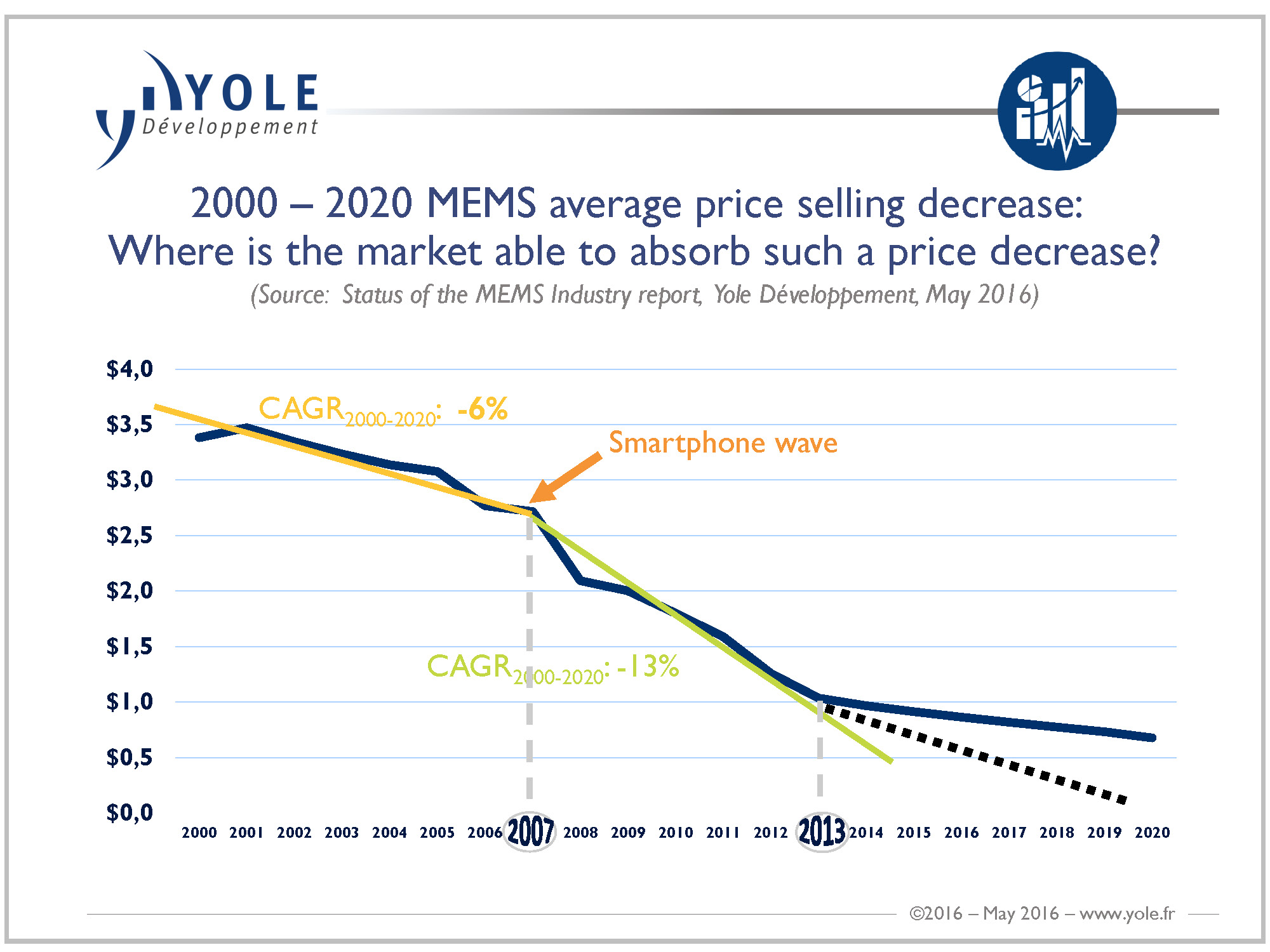Uncertain times ahead for the MEMS market, says Yole
Recent years have been a golden age for MEMS markets, with large, increasing volumes driven by consistent smart phone shipment growth. “We have now entered more uncertain times,” announces Yole Développement. The market for smart phones/portable applications is levelling out, meaning MEMS markets are growing more slowly than in previous years. Today, CAGR from 2015-2021 for the value of MEMS markets will be 8.9%, moving from $11.9bn to $20bn. Over the same period the CAGR of units shipped will be 13%.
Under the Status of the MEMS Industry (2016 Edition) report, Yole proposes a close and detailed analysis of the MEMS industry status. It is comprehensive understanding of the MEMS markets and related applications (automobile, consumer, defence & aeronautics, medical, industry and telecommunications). Yole’s report details the MEMS players’ dynamics and market figures for the 2015-2021 period. The MEMS & Sensors team from Yole also identified emerging MEMS devices and invite you to discover the detailed review of the MEMS game-changers and industry trends.
Consumer is no longer a goldmine… The consumer market is challenging MEMS manufacturers. Although volumes are still increasing, this market is becoming highly competitive. Use of sensors such as MEMS microphones, inertial, pressure and gas sensors in mobile phones is spreading, but these devices have very low margins today. Since 2013, MEMS ASP for consumer applications has fallen below $1. Meanwhile, end users are giving their suppliers a hard time as the business relationship is sometimes very short, shifting from one device maker to another. Moreover, Yole’s analysts do not see large volume markets being a short-term growth driver for MEMS:
- The IoT is still a niche market today. The main applications are industrial, not looking for low costs and large volumes.
- Wearable electronics applications look very promising as part of the consumer industry, however volumes are not yet high.
But there are some rich seams in other markets Industrial, medical and automotive applications still offer pockets of growth and profitability. “The car industry is still hungry for sensors, with 20 MEMS devices per car on average today, and autonomous cars might offer more possibilities for MEMS technologies,” commented Dr Eric Mounier, Senior Technology & Market Analyst, Yole. “New opportunities in medical come with long-term developments that are finding the market today. These include silicon microfluidic chips for medical micropumps, with Debiotech earning significant revenue from its MEMS micropump in 2015. Industrial and defence markets also provide growing opportunities for high-end and high-margin devices such as inertial and pressure sensors.”

How can companies escape the commodisation paradox? Over the past five years, the MEMS industry has been driven by increasing volume from the consumer industry with smart phones and wearables. This industry has in turn pushed for smaller dies for integration in thinner handsets. This reduced prices, shrinking margins so that the MEMS market currently does not have the same comfortable growth rate as previous years. There are several ways to escape this commodisation paradox:
- The 'Production Infrastructure' pathway with either shared manufacturing infrastructure cost with other applications, for example between automotive and consumer, or improved processes that lower cost, like CMOS MEMS.
- The 'Creation of Value' pathway with either new devices, like gas sensors, merging with other sensors to make combos, or improved sensor output. The CMOS image sensor industry offers an example of the last option, solving the commodisation issue by increasing pixel and die size, and therefore also price, as customers’ value high quality pictures. 'Creation of Value' is closely linked to the growing importance of software embedded within the sensor to deliver higher level functions for system makers.
Outlook for 2016 and beyond: what can we expect? We believe the MEMS markets will continue to grow and will provide interesting business opportunities. We see new devices coming that could be interesting growth drivers in the future, including gas and environmental sensors and combos, ultrasonic MEMS and silicon microfluidics. Along with these new devices, some established ones promise more growth such as radio-frequency MEMS or inertial measurement units.
“2016 might be challenging for MEMS companies, but there are also opportunities with emerging and growing demand for pressure and gas sensors, fingerprints and autofocus shaping the consumer market,” asserted Claire Troadec, Technology & Market Analyst, Semiconductor Manufacturing, Yole. “At Yole, we believe the future growth of the MEMS market will be driven by various applications, including smartphones, wearables, automotive and medical.”


